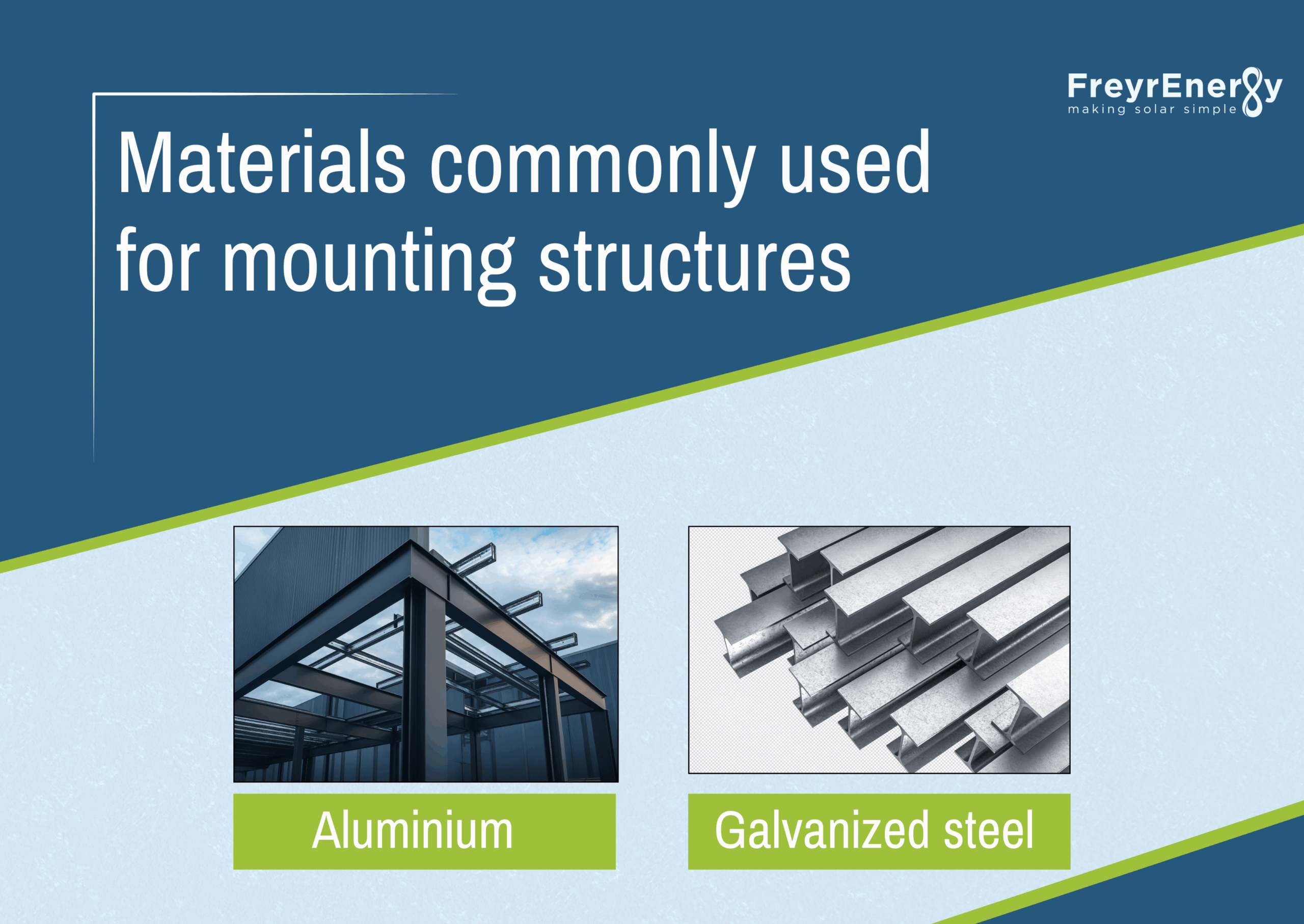Solar installation needs careful planning, as optimum output production depends on this. An important factor to consider in solar installations is the mounting structure. Solar module mounting can be of many types. This depends on the location, availability of space, and more.
In this blog, we discuss the various types of solar mounting structures so that you can decide on the one suitable for your solar installation.
Solar mounting structure and its components
A solar mounting structure is the foundation on which solar panels are secured on the rooftop or ground. They provide stability to the solar system and help in its efficient functioning. It also offers proper orientation to receive effective sunlight.
Flashing, rails, screws, brackets, clamps, fasteners, and mounts are some of the components that make a solar module mounting structure.
Types of mounting structures
1. Roof mount
A roof mount structure is installed on the rooftop of a building. They are suitable for residential buildings where land space is limited. The unutilized roof space can be used to fix the solar panels. They enable maximum sunlight exposure to panels, as there is no issue of shading.
Roof mount structures are cost-effective and a good choice for small-scale installations. The only essential aspect here is the availability of a roof in good condition.
2. Ground mount
Ground-mount structures are anchored to the ground and are installed in areas where plenty of land is available. It is most common in commercial and large-scale solar installations.
Orientation and tilt can be best achieved in ground-mount structures. They have the advantage of optimal airflow, which keeps the panels cool and enables maximum output generation. They are easily accessible; hence, maintenance is easy.
3. Pole mount
These structures are fixed to poles that are secured to the ground. They are similar to ground-mount structures but are raised above the ground.
The elevated position helps prevent debris accumulation and enables easy maintenance. They are suitable for smaller areas and locations where sunlight may be blocked by snow, shading, or dust.
4. Tracking systems
Solar tracking systems may be single-axis or dual-axis. They follow the sun’s path and adjust the orientation of panels, thereby enabling optimum energy production. Though they are supposed to be efficient, they are expensive and need extensive maintenance.
5. Carport / Solar Canopy Mounts
Carport or solar canopy mounting structures are installed above parking areas, walkways, or open commercial spaces. They serve a dual purpose—providing shade for vehicles while generating clean solar power. These structures are strong, elevated, and ideal for commercial buildings, institutions, and residential societies that want to utilize parking space effectively without using additional land.
6. Floating Solar Mounting Structures
Floating solar mounting structures are installed on water bodies such as lakes, ponds, reservoirs, or dams. The panels are fitted on buoyant platforms that float on water. This reduces land usage, keeps the panels naturally cool, and helps increase energy generation. Floating systems are becoming popular in areas with land constraints and offer excellent long-term efficiency.
Materials commonly used for mounting structures

Aluminum and galvanized steel are the most commonly used materials in mounting structures. The choice of material decides the durability, weather resistance, and corrosion resistance of the structure.
Aluminium
It is lightweight and durable and is most common in rooftop mounting structures. It is corrosion-resistant and is suitable for installation in coastal areas, too. It can be easily transported to remote areas due to its lightweight. With all these benefits, it is still not as strong as steel
Galvanized steel
Steel is heavier than aluminum, highly durable, and corrosion-resistant. It can be used even in ground-mount structures due to its strength. It is suitable for coastal and humid areas.
Certain mounting structures use a combination of steel and aluminum to get the best of each material.
Points to note before choosing a mounting structure

Surface of installation
A roof-mount structure demands a structurally sound roof. It should have an appropriate load-bearing capacity. Also, the ground mount structure depends on the type of soil available. All these aspects are to be assessed by a professional solar company.
Orientation
The type of mounting structure should allow proper tilt with maximum sunlight exposure. It should be devoid of shading.
Budget
The budget at your disposal should also be considered before choosing the type of mounting structure. A roof mount is comparatively cost-effective.
Regulations
Local rules must be adhered to while selecting the mounting structure.
Which mounting structure should you choose?
| Factors | Roof mount | Ground mount | Pole mount |
| Space | Limited roof availability is sufficient | Needs a large space | Minimum space is required |
| Cost | Lowest | More expensive than a roof mount | Most expensive of all |
| Maintenance | Difficult to access, as you need to climb to reach the panels | Easily accessible for maintenance | Easily accessible |
| Strength | Depends on the load-bearing capacity of the roof | Interference is possible due to the ground location | Higher elevation protects it from wind and intrusion. |
Choose the mounting structure based on land availability, the size of your solar system, and your budget. Always consult a professional solar installation company for advice.
Conclusion
The above blog explains the type of mounting structures and the benefits associated with each. The choice of a particular structure depends on various factors. This is best decided by the solar company you hire for installation.
Choosing the right solar module mounting structure ensures that your solar system functions efficiently, producing optimum output.
